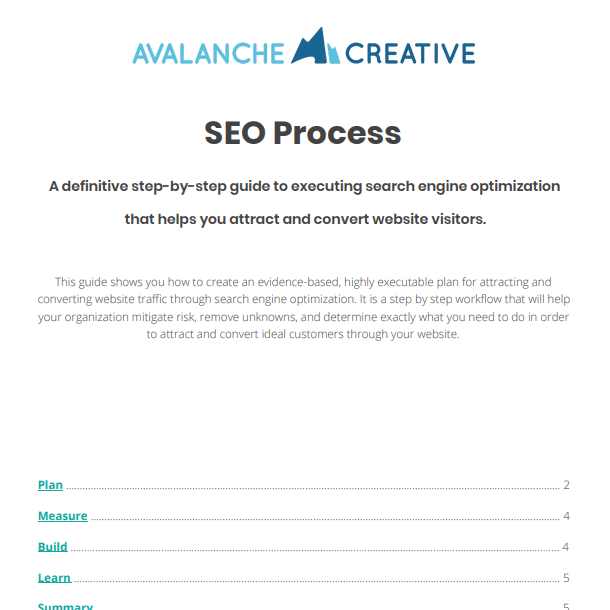Posts vs Pages: What Ranks Better?
Category: Search Engine Optimization | Tags: SEO, avalanche email, content marketing, wordpress
Learn More and Subscribe to The Avalanche Weekly Email
Today I’m going to talk about blog posts and pages and what the differences are (or aren’t) in regards to SEO.
First, let’s set the record straight.
Search engines do not see a difference between your pages and posts.

Search engines crawl content and look for context. They don’t care how a CMS (Content Management System, like WordPress) defines the content type.
Like a cow’s opinion, it just doesn’t matter. It’s moo.

So, what is the difference between a page and a post then?
That depends on who you ask, honestly.
Typically, pages are built for transactions and blog posts for information.
You create pages for:
- Your products.
- Your services.
You create posts for:
- Your knowledge.
- Your experience.
Typically, posts rely less on design and feel more like an article, whereas a page typically relies more on design to enhance the experience of the content.
Both have their place, but when it comes to SEO, you can go either way. But, sometimes it can be hard to determine whether or not your content makes more sense as a blog post or a page.
Often, you’ll need to make that decision yourself with all the right facts and understanding the possible intentions of the searchers you are optimizing for.
Here’s a quick story on why we typically choose posts over pages:
Example with Facts 
- We have a blog post titled SEO for Therapists that ranks #1 for a few keywords.
- 95% of this 4,405-word article is sharing our knowledge and experience.
- This post is optimized for people looking to do SEO for themselves.
- It is not focused on Avalanche Creative’s SEO services for therapists…
- But it does attract those that might be interested…
- In fact, this post has generated 10s of thousands in revenue for our business.
If we had made a page more focused on our SEO services for therapists, I don’t think we’d be ranking as well.
Bonus: Read Our Story in the News!
My wife and I were interviewed by the Grand Rapids Business Journal recently, telling the story of how we started Avalanche Creative. Read all about it here.
Share this article:
The Avalanche Email: Fun. Simple. Educational. No Selling.
Learn Result-focused SEO & Content
Join over 2,272+ others who get one email every Wednesday with simple instructions on how to get more website traffic and leads through SEO and content marketing. (Learn more about the email)
Keep Learning
🏔️ Stop Tuning the Race Car That Won’t Win a Race
Site speed won’t fix a weak message. Focus on clarity, trust, and real value first. Here’s how to build a website that actually works.
🏔️ Earning Preference > Tracking Visibility
Hi friend, Lance here. Today’s email is about a shift we’re seeing and feeling across marketing teams right now: We’re obsessed with tracking visibility but under-invested in earning preference. 🚨 The Problem Every marketer I talk to wants to know how their brand shows up in AI search, LLMs, and assistants. We’re running to new tools that track…
What’s the Best CMS for Landscaping Businesses?
Compare the best website platforms for landscapers. Learn the pros and cons of Wix, Squarespace, and WordPress, and why WordPress is best for long-term SEO.
🏔️ AI & Basketball
AI can generate content, but can it win the game? Learn why outputs ≠ outcomes in digital marketing, and how to use AI like a pro.
Grow Visibility Like You Grow Lawns with Local SEO
Use local SEO to attract more landscaping leads in your service area. Learn how to optimize for locations, maps, and search intent.
20+ Lawn and Landscape Marketing Examples (Updated Weekly)
See how real landscaping and lawn care companies use websites, SEO, ads, branding, and more to attract leads and grow their business.




